
Portrait of Carderera by Federico de Madrazo. Oil on cardboard. Madrid, Luis Carderera collection
For Valentine Carderera the trip was knowledge and return to a past on the brink of destruction. He belonged to the generation of artists who, during the nineteenth century, used drawing to document monuments which, in many cases, were turned into rubble due to urban development and the disentailment of ecclesiastical assets.
** The exhibition curated by José María Lanzarote at the National Library** traces the trajectory of a restless artist, an active defender of medieval heritage and the first biographer of Francisco de Goya.
As is typical in an Aragonese, Carderera remained faithful to his origin. Huesca, the city of his birth, was always an obligatory stopover on the return from France or Italy. There he was recruited by General Palafox at the age of nineteen as "army eyeliner"
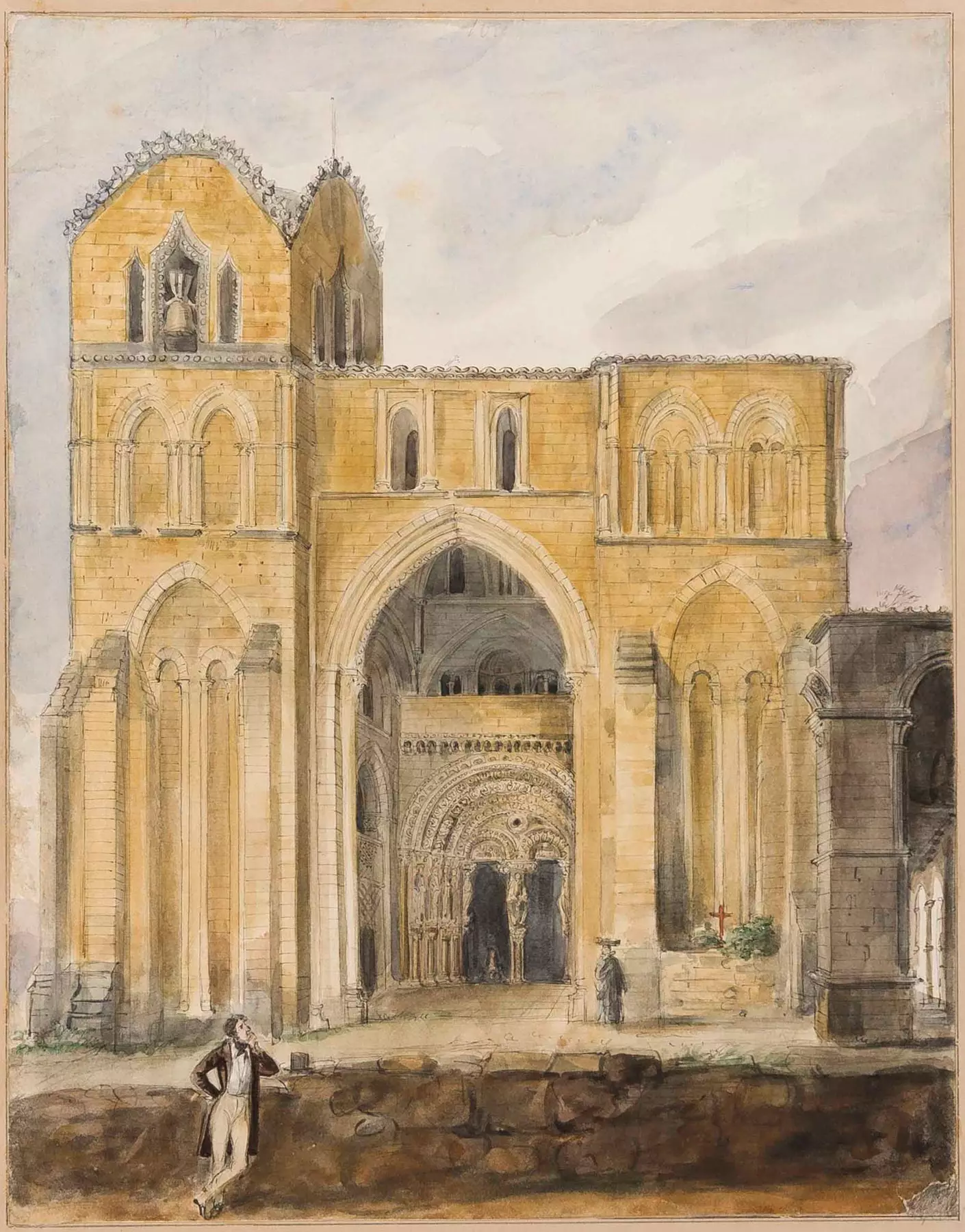
Basilica of San Vicente, Avila. 1840, painted by Valentín Carderera y Solano
It is likely that the general introduced the Duke of Villahermosa. In the absence of personal fortune, every artist needed a protector. Carderera found it in the aristocrat. Thanks to his patronage, after studying at the Royal Academy of Fine Arts of San Fernando , in Madrid, the painter completed his training in Italy.
The diary in which he recounts his stay begins with an itinerary that lasted for three months. Leaving Spain he stopped in Toulouse (where he bought prints), Nîmes, Montpelier, Aix-en-Provence (where he attended a performance of Rossini's opera The Barber of Seville) and, after crossing the Alps, in **Genoa, Lucca, Livorno and Florence.**
In Rome he copied works of great masters, like The School of Athens, by Raphael, but his aesthetic inclinations led him towards the medieval. For this he traveled to Naples, where he represented in watercolors the Gothic gables and baldachins of the houses of Anjou and Aragon.
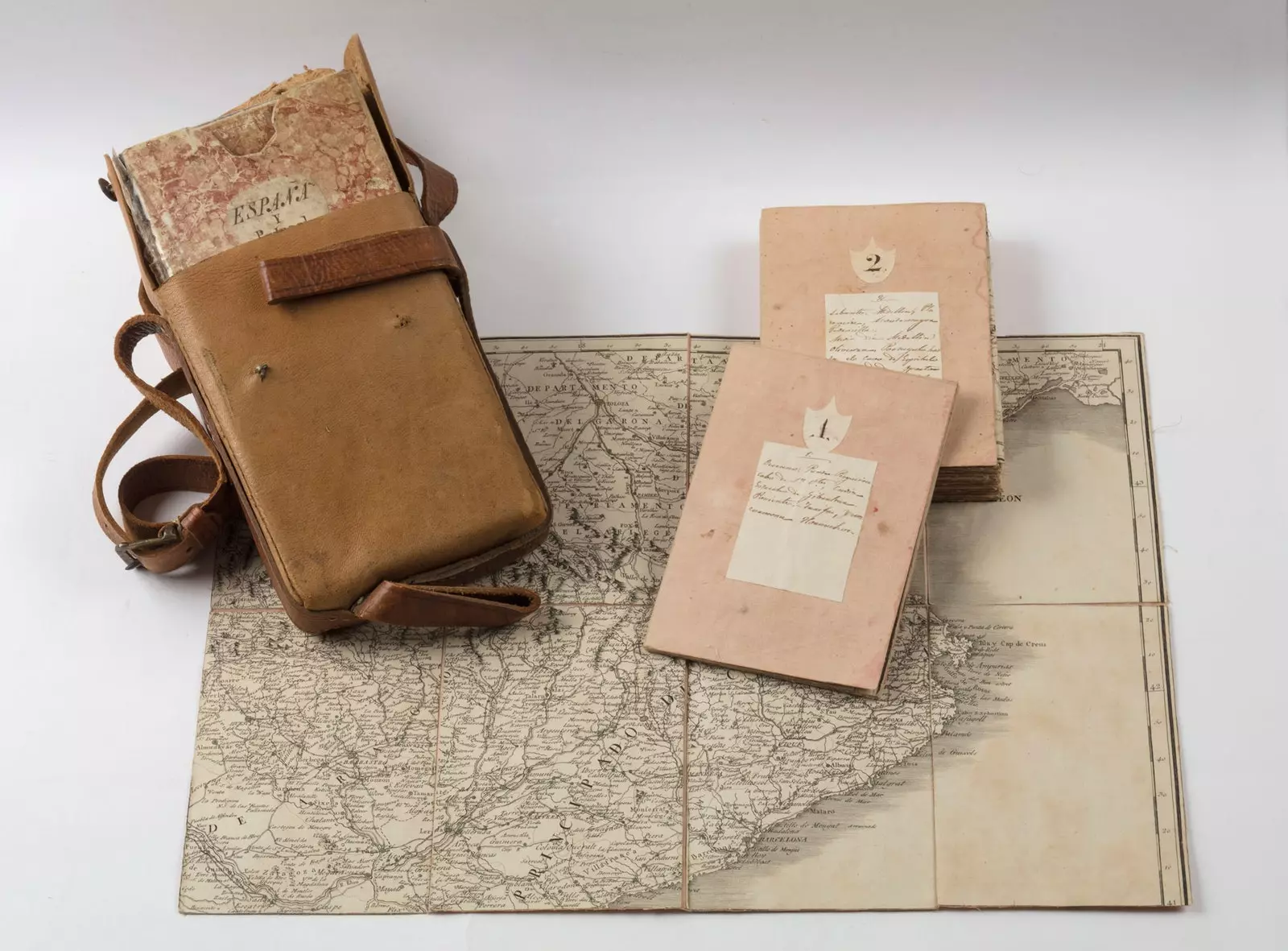
Map of Spain and Portugal belonging to Carderera
There he noted in his diary: “I attended the great court party at the Teatro de San Carlos, which seemed to me like something out of a thousand and one nights, for the great gala, luxury and ladies full of gems. I lost the ticket immediately after I bought it, I had to take another one.”
The agitated Spanish political scene generated a continuous flow of exiles. In his Roman stay Carderera frequented the prince of Anglona that, in addition to being a collector, he was fond of painting. They went together to his summer residence in Tivoli, where he painted the gardens of the Villa d'Este.
Ruins appear in its water holes among the wooded vegetation, the baroque façade of the Villa Falconieri in Frascati, or scenes in which he represents himself contemplating the landscape.
He also often visited the villa owned by Princess Doria-Pamphilj in Albano Laziale. A relationship developed between them that Pedro Madrazo, a friend of the painter, defined as platonic. He painted eight portraits of the aristocrat; she gave him a snuffbox.
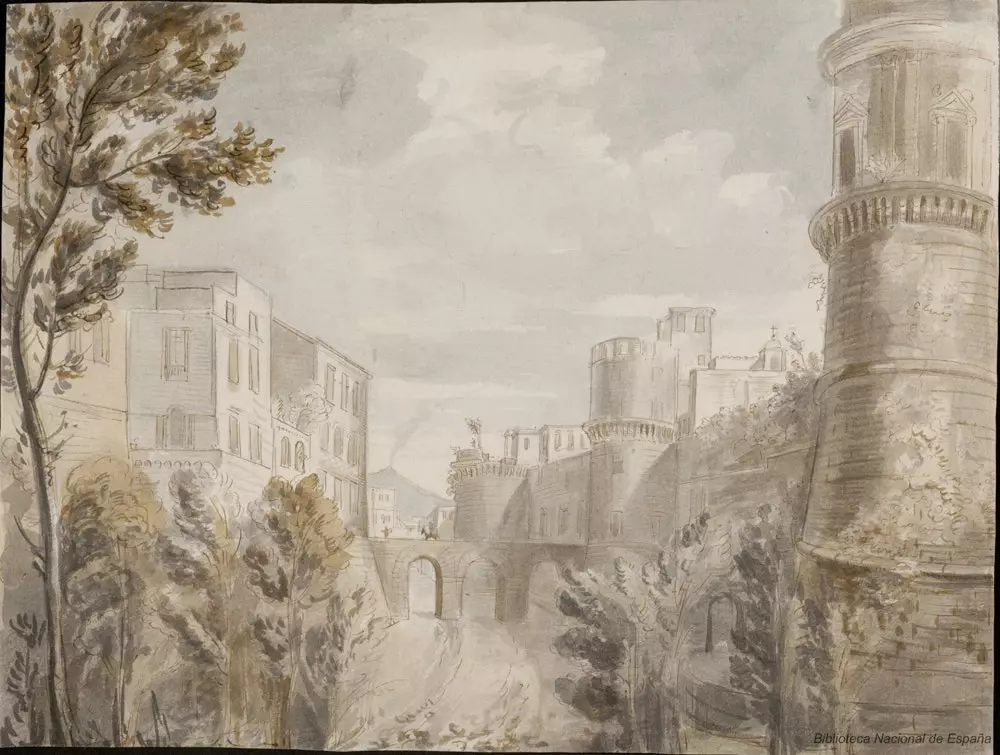
View of the ponte nuovo next to the Carbonara Gate, in the walls of Naples
After nine years in Italy, he returned to Spain, where he became a standard-bearer of neo-Gothic taste. Among his works in this style, the catafalque for the Duke of Osuna stands out.
In this medieval Fantasy, the gallery of pointed arches that houses the sepulcher is crowned with a row of armor with feathered helmets and a gallery of coats of arms, topped by a mansard roof with chandeliers and an allegorical figure.
The portraits of him are not exceptional when compared to those of contemporaries such as Madrazo or Vicente López. His restlessness was oriented towards the picturesque. In constant trips around the peninsula he documented monuments, regional costumes and religious clothing.
He was fearless in his work. He used the brush to preserve the memory of what the confiscations placed in the crosshairs of plunder and speculation.
His eagerness to gather a visual archive of Spanish architecture and art nurtured the germ of what would be his great editorial project: Spanish Iconography.
The search for financing, together with the exile of María Cristina, who was accompanied by a large part of his friends, they took him to move to Paris.
At one of the émigré court dances, the ruling queen disguised herself as Isabel la Católica. The symbolism of the portrait made by Carderera is evident.
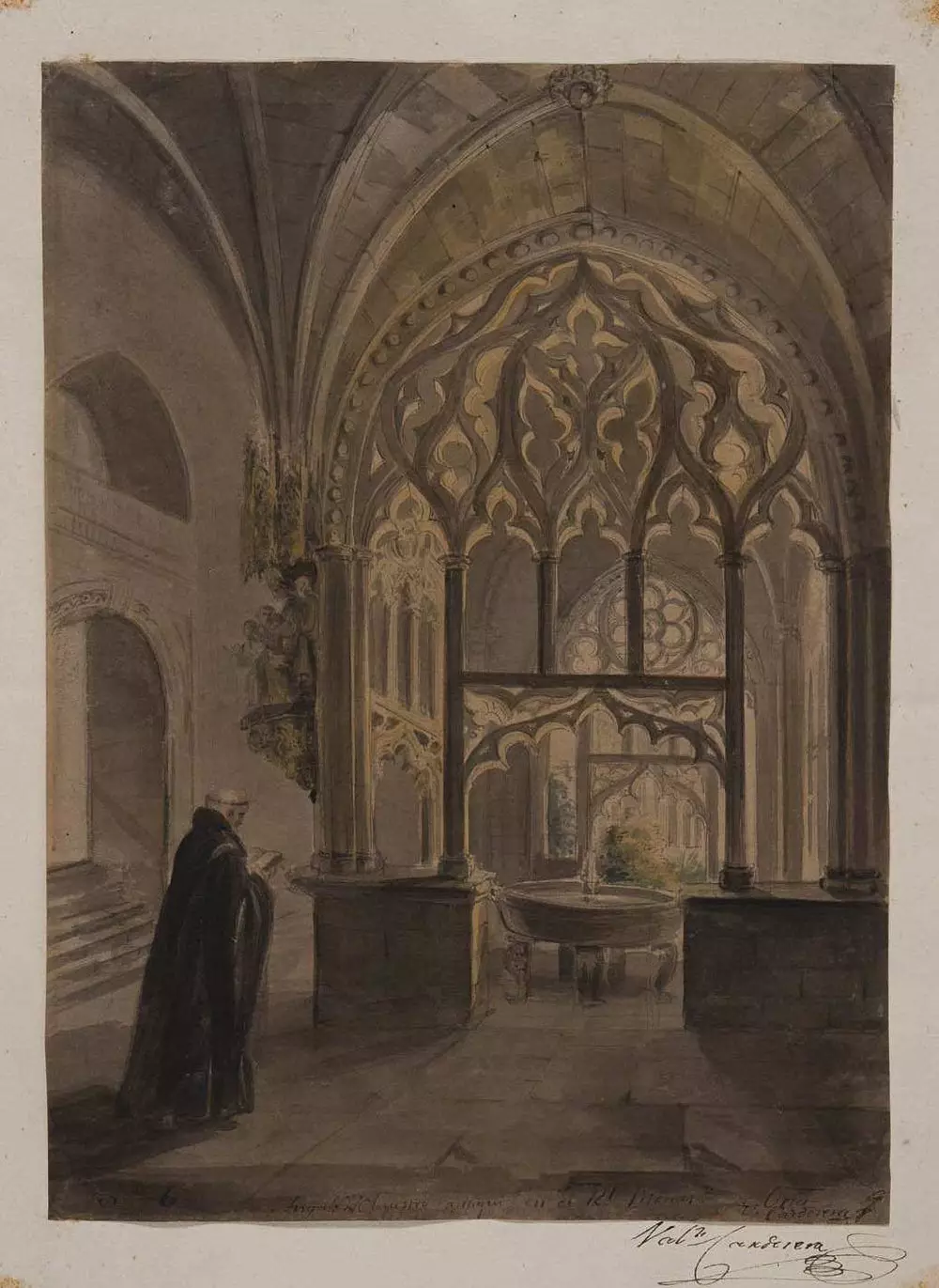
Cloister of the monastery of Oña, Burgos
Spanish iconography meant the consecration of the historian and the scholar. In Europe, the exoticism of the Andalusian and the testimony of the Arab legacy were sought. Carderera's work, in which Castilian and Aragonese Gothic predominated, was situated against the current.
It is probable that the economic difficulties caused by the publication led him to offer his collection to the State. this counted a total of 27,000 engravings and nearly 2,000 drawings , in addition to a large bibliographic collection.
His legacy was completed with a subsequent donation and sale to the Prado Museum of court portraits and a batch of 262 drawings by Goya.
The figure of Carderera offers very diverse readings. The exhibition at the National Library recreates to the traveler who paints under the vaults of monasteries in ruins ; whom he constructs imaginary romances with Roman princesses and, dazzled by the glitter of the halls, he loses his ticket ; to whom he traces the scenarios of an exile that does not concern him.
Between all of them, he speaks clearly the traveler who fights to preserve the memory of what he sees.
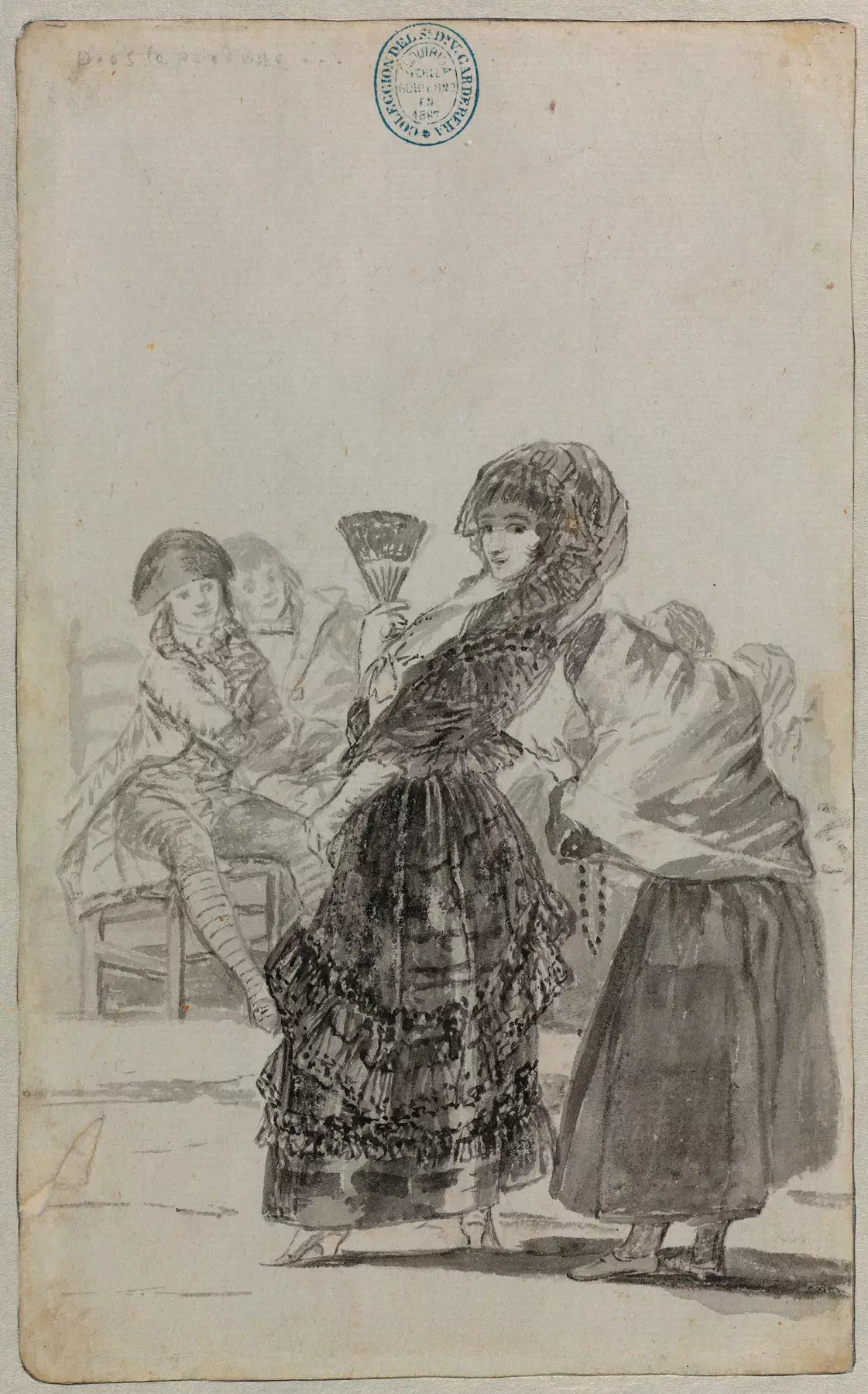
Francisco de Goya (1746-1828). God forgive her: And she was her mother. 1796-1797
